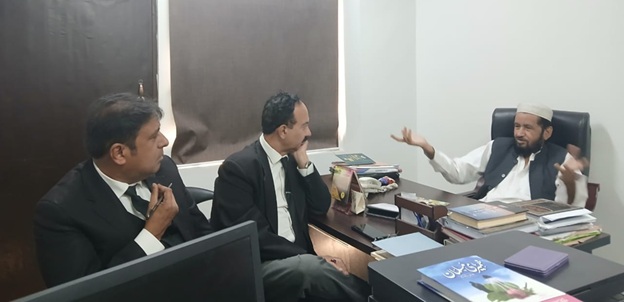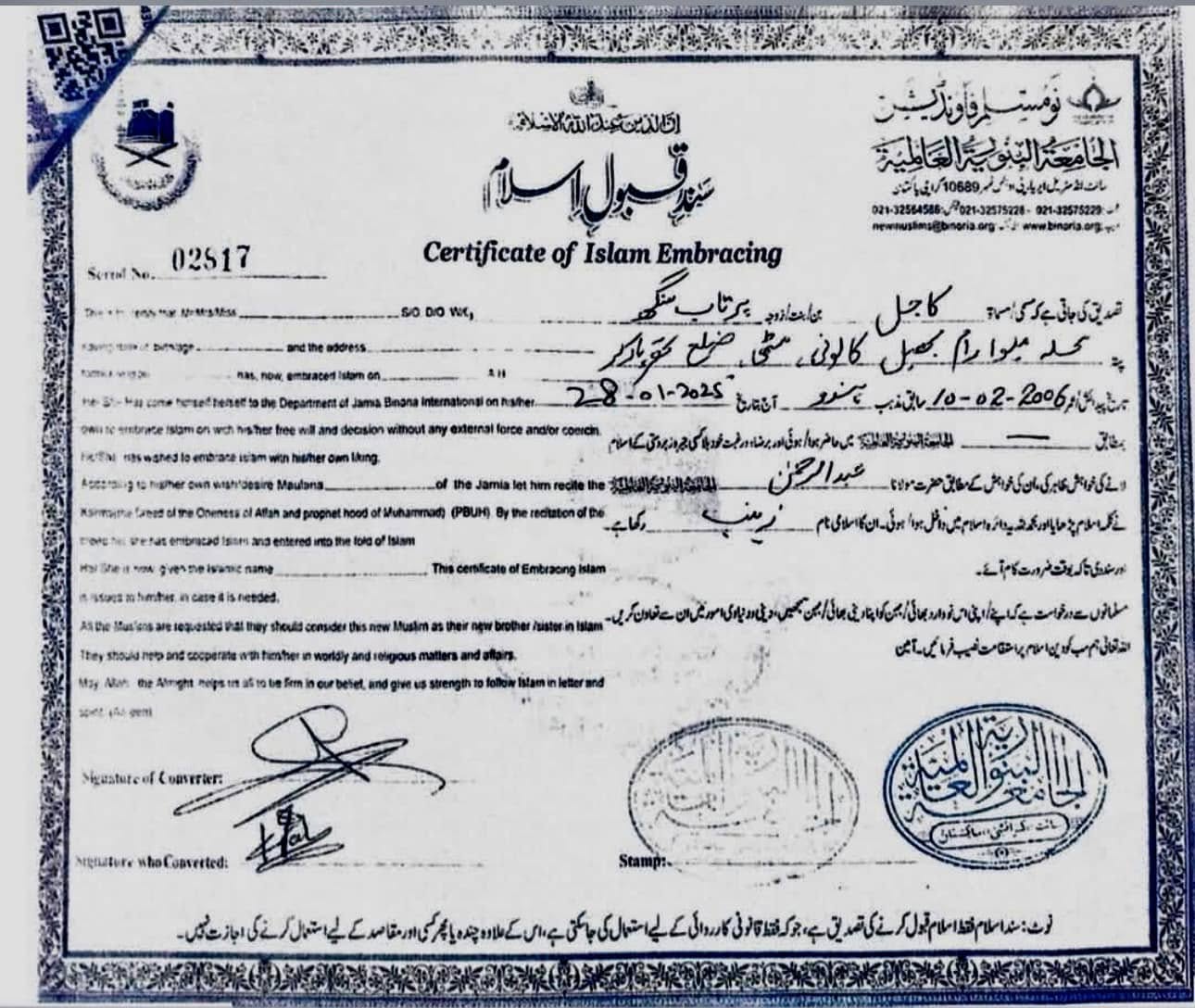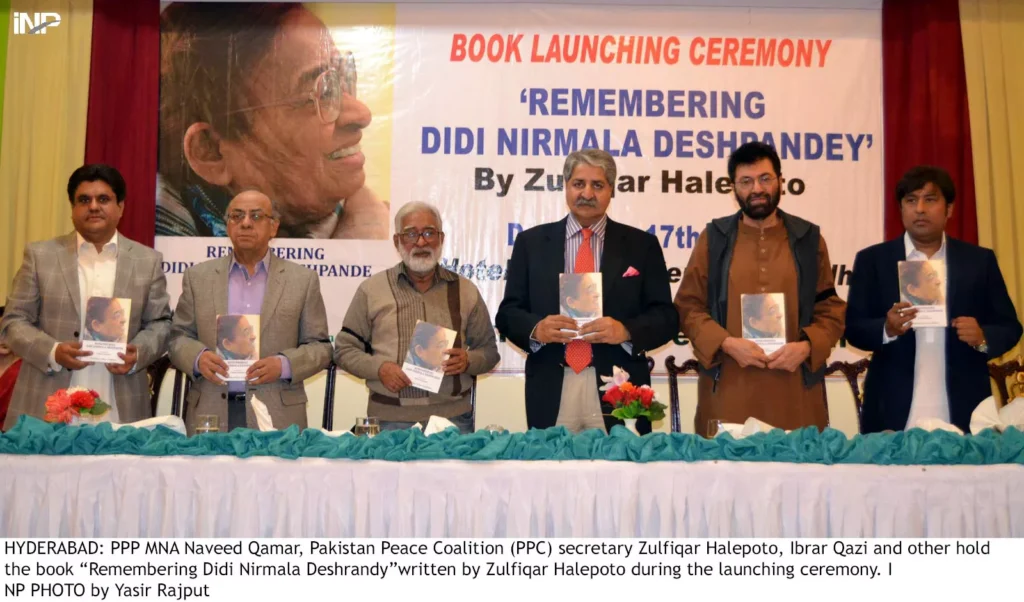Fact-Finding Hindu Girls of Mithi: Two Hindu girls, Rumela and Kajul, from Mithi, Tharparkar, claimed forced conversion; a fact-finding expedition by the Sindh Human Rights Defenders Network (SHRDN) has illuminated a more complex scenario than first reported.
Although the SHRDN came to the conclusion that the girls’ Islamic conversions were not coerced, their research pointed to a well-organised network enabling such conversions, therefore, raising questions about the vulnerability of religious minorities in the area.
Once word of 18-year-old Kajul and 19-year-old Rumela’s abduction, conversion leaked on social media, the story attracted a lot of interest. Calls for their rapid recuperation and return to their homes sprang from the allegations, igniting indignation and worry from the Hindu community, human rights advocates, and civil society.
Driven by a dedication to expose the truth and stop further harm to the religious minority in Sindh and the country’s reputation, the SHRDN started a fact-finding trip. Comprising Advocate Ali Palh, Ddarakshah Suleh, and Advocate Sadar Uldin Jatoi, the team dug into the background of the girls’ abduction and later conversion.
Rumela and Kajul, Mewa Ram Colony inhabitants in Mithi, were both registered in an elementary College Mithi Bachelor of Education (B.Ed) program, according to their research. Interviewing relatives, reporters, and other local sources, the SHRDN team discovered the girls had left their houses around 4 a.m. (probably on 27th January 2025) without telling their family.
Fact-Finding Hindu Girls of Mithi Conversion: Families Speak Out
Originally difficult to contact because of the emotional suffering of Kajul’s father, who had a heart attack after the tragedy, the SHRDN team finally got in touch with the families and relatives of both girls. The girls’ families said Rumela and Kajul left their house of their own free will, and they were neither kidnapped nor abducted.
Head constable in the police department Rumela’s father thought his daughter and Kajul had been swayed by some college students who “washed their brains” and urged them to adopt Islam.
The families also noted that the girls had sometimes been spotted sporting scarves, supposedly directed by the institution for certain sessions or courses.
Based on Influence
Independent sources who requested anonymity indicated that both girls had been observed sporting scarves like Muslim females and were under the influence of Islamic values. These sources said the girls had converted to Islam before leaving their houses, but they hid it from their relatives out of anxiety. One source even said that one of the females was wearing tasbih, prayer beads.
According to the reports, the parents momentarily stopped their daughters from attending college when the college management advised them about these findings. Still, they finally allowed them to keep on with their education.
Travel to Karachi.
The girls left their houses together on the night they vanished and headed for Jamia Binoria Aalamia, a Madrasah in Karachi. According to the Jamia Binoria management, they are now living in the female portion of the Madrasah under the direction of the founder’s wife.

In Jamia Binoria
Fact-Finding Hindu Girls of Mithi Conversion visited Jamia Binoria. The SHRDN team comprised of Mr. Saifullah Rabbani, Director of the Conversion Section, and his colleague Hussain Sufi. The Madrasah management verified that both females sought refuge in the Madrasah for more Islamic knowledge, education, and safe sanctuary after having adopted Islam of their own volition.
The government found it difficult to provide a convincing justification for how the girls got from Mithi to Karachi in the middle of the night, however, indicating they could have learnt about the Madrasah online or via mobile phones. Later on, a Madrasah administration official disclosed that a nearby Madrasah had helped them on their path but withheld additional information.
Regarding the girls’ exposure to Islamic teachings, the government said that anyone with a mobile phone may access their materials online.
Age and Medical Exams
Originally claiming to only convert those eighteen years of age or above, the Madrasah administration eventually acknowledged to admitting minor females, citing a case where the Sindh High Court denied the parents’ request.
About medical visits, the Madrasah government said they opposed Sharia law and Jamia administrative approval. Still, they had filed a protection case with City Court Karachi in the District and Session Judge District West.
Later, under section 22 B CrPCC, the SHRDN team acquired a copy of the case the girls filed against their dads and other family members under the names Rameela/Ayesha and Kajal/Zainab.
Motives and family visits:
Declaring that it was only a question of conversion to Islam, the Madrasah government denied that marriage drove the conversions. They did, however, add that the females would make that decision should they choose to wed Muslim lads.
The government also said that the girls had stated their want to stay at Binoria after joining Islam and that their family had paid them visits. Along with public officials and religious leaders, the families apparently departed happy after the conference.
conflicting narratives
Although the Madrasah claimed, a family friend told me that Kajul had said she wanted to go back to her family at the second meeting but subsequently changed her mind in the third.
Unanswered Concerns
The fact-finding trip raised numerous important issues yet unresolved:
- How did the girls arrive at Jamia Banoria Aalamia?
- Who encouraged them to leave from their houses at four in the morning?
- Who gave them a ride from Mewa Ram Bheel Colony Mithi?
These questions imply that related to Jamia Binoria, Mithi has a persistent source of facilitation, maybe inside the basic college.
Conclusion and Suggestions
The SHRDN delegation came to the conclusion that forced marriage, abduction, or conversion were not what occurred in Rumela or Kajul. But their research turned up a structured and orderly network with links in both Mithi and Karachi that enabled such conversions.
The SHRDN thinks that people at the primary college actively participate in faith conversion as they have means to bring converted people to Karachi. This suggests an information-sharing system aiming at the conversion of vulnerable people and communities.
Should the state and its institutions fail to respond decisively, the SHRDN projects additional similar situations might arise. Although in this instance the conversions were voluntary, they were organised and targeted, which caused anxiety and uneasiness among Mithi residents as well as across the province of other religions.
These kinds of conversions greatly influence children’s education, especially for females, and help religious minorities migrate to India and Western nations.
The SHRDN advises: in order to solve this problem:
Establishing a legislative framework to control faith conversions; building a governmental process to get and review petitions for conversion, therefore guaranteeing transparency and avoiding coercion.
- Denying private establishments from encouraging religious conversions.
Establishing a governmental system to guarantee religious minority treatment as equal citizens and handle their complaints - Establishing a follow-up system to guarantee people, especially women, safety and well-being, thus avoiding trafficking, abuse, forced marriage, or smuggling.
Keeping a database of conversions and routinely checking to convert security and well-being. - These steps will help the government to defend everyone’s rights, promote religious peace, and stop the exploitation of weaker people and communities.
FaceBook Post
Following is copy-paste of the Facebook post in a group:
![]()
![]() Heartbreaking Tragedy in Mithi
Heartbreaking Tragedy in Mithi![]()
![]()
Tharparkar:
![]()
![]() Our Daughters Need Justice!
Our Daughters Need Justice!![]()
![]()
A devastating incident has shaken the Hindu community in Mithi, Tharparkar, Sindh. Two young Hindu girls, full of dreams and aspirations, have been cruelly snatched away from their families.
Kajol, the 18-year-old daughter of Pratap Singh (now renamed Zainab), and Rasila Bai, the 19-year-old daughter of Keshav Lal (now Ayesha), were abducted a few days ago. Witnesses report that they were forcefully taken in a black van, and distressing reports suggest they are now being held in a madrassa in Karachi’s Banuria Town, where they have been forcibly converted and married.
This is not just a crime against these innocent girls—it is an attack on our dignity, our identity, and our right to exist. The Hindu population in Pakistan has been systematically dwindling, falling from 20% to a mere 1%. Yet, despite such horrifying atrocities, the world remains silent. Organizations like the United Nations, meant to uphold justice and human rights, have failed to act decisively.
How many more daughters must we lose before the world takes notice? How long will this injustice continue?
We refuse to remain silent! We must raise our voices—louder than ever—on national and international platforms. We must demand justice, protection, and the right to live without fear.
Let’s stand united! Let’s fight for Kajol, for Rasila Bai, and for every innocent soul who has suffered such cruelty. Our daughters deserve safety, dignity, and freedom!




